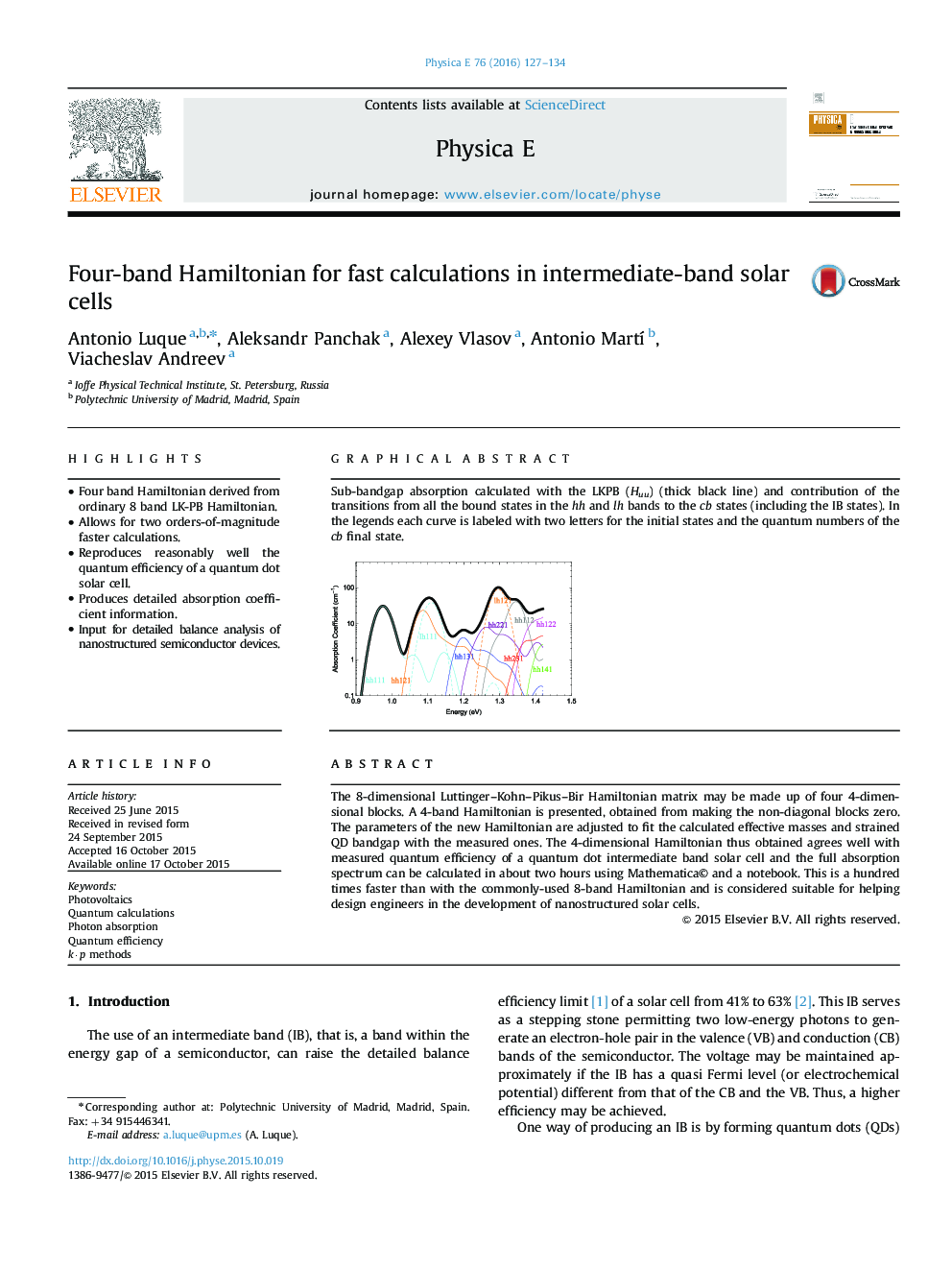| Article ID | Journal | Published Year | Pages | File Type |
|---|---|---|---|---|
| 1543827 | Physica E: Low-dimensional Systems and Nanostructures | 2016 | 8 Pages |
•Four band Hamiltonian derived from ordinary 8 band LK-PB Hamiltonian.•Allows for two orders-of-magnitude faster calculations.•Reproduces reasonably well the quantum efficiency of a quantum dot solar cell.•Produces detailed absorption coefficient information.•Input for detailed balance analysis of nanostructured semiconductor devices.
The 8-dimensional Luttinger–Kohn–Pikus–Bir Hamiltonian matrix may be made up of four 4-dimensional blocks. A 4-band Hamiltonian is presented, obtained from making the non-diagonal blocks zero. The parameters of the new Hamiltonian are adjusted to fit the calculated effective masses and strained QD bandgap with the measured ones. The 4-dimensional Hamiltonian thus obtained agrees well with measured quantum efficiency of a quantum dot intermediate band solar cell and the full absorption spectrum can be calculated in about two hours using Mathematica© and a notebook. This is a hundred times faster than with the commonly-used 8-band Hamiltonian and is considered suitable for helping design engineers in the development of nanostructured solar cells.
Graphical abstractSub-bandgap absorption calculated with the LKPB (Huu) (thick black line) and contribution of the transitions from all the bound states in the hh and lh bands to the cb states (including the IB states). In the legends each curve is labeled with two letters for the initial states and the quantum numbers of the cb final state.Figure optionsDownload full-size imageDownload as PowerPoint slide
